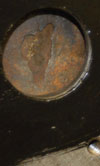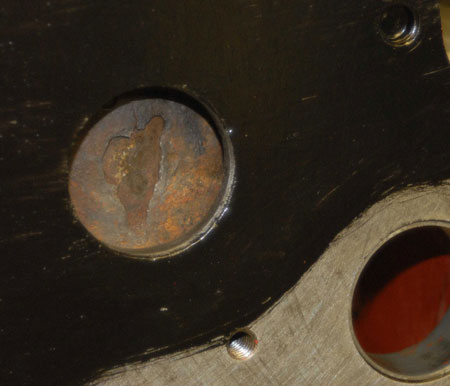Corrosion
 It is a rather strange but ironic fact of life that once a racing engine gets over a certain age then the biggest causes of failure are not likely to be those associated with excessive loads or the breakdown of lubrication, but simply that of corrosion. In the prime of its often very short racing life, an engine may be cosseted by professionals whose whole existence is centred on the well-being of that unit. It will be stripped, cleaned and examined on a regular basis and then re-assembled with the utmost care and then crated away into storage perfectly preserved until the time comes for it to be active again and give its best.
It is a rather strange but ironic fact of life that once a racing engine gets over a certain age then the biggest causes of failure are not likely to be those associated with excessive loads or the breakdown of lubrication, but simply that of corrosion. In the prime of its often very short racing life, an engine may be cosseted by professionals whose whole existence is centred on the well-being of that unit. It will be stripped, cleaned and examined on a regular basis and then re-assembled with the utmost care and then crated away into storage perfectly preserved until the time comes for it to be active again and give its best.
However, inevitably when the glory days are over and the unit is discarded, perhaps left on its own in damp storage or bolted into the back of some historic racing car somewhere, another process is slowly taking over, more silently or deadly than the occasional missed gear change - that of corrosion. And while this can (and does) occur in many parts of the engine, the main area of concern is at the back of the cylinder liner inside the cooling water jacket.
Euphemistically now referred to as environmental stability, the causes of corrosion can be many and varied. We can have general surface corrosion, pitting corrosion, crevice corrosion, stress corrosion, fretting corrosion and some, maybe even all may be found inside a water cooling jacket of an engine. The common link between them all however, is water, but some materials are more prone to this type of activity than others. In the case of that most common of cylinder liner materials, cast iron, this process can be highly sensitive to the presence of water while others, aluminium for instance, apparently not so. The governing factor in all this is normally the position of the metal in the electrochemical series, but this is not always the case. For example, with its position higher in this table you would expect aluminium to be more readily corroded. This is not always so. When exposed to the air, aluminium rapidly reacts with the oxygen in it to produce a thin layer of aluminium oxide. Aluminium oxide has good adherence properties and is by and large impermeable to water and therefore will form a protective coat around the metal. The standard electrode potential of -1.66 volts being greater than that of iron at -0.44 volts therefore has little influence.

Perhaps the most common form of corrosion in the water jacket however, when the cylinder liner is cast iron or steel, is rust. Formed in the presence of both oxygen from the air and water, the iron atoms of the liner outer surface give up their free electrons and become positively charged (Fe2+). Electrons liberated so then migrate through the metal and into the water where they can combine with any dissolved oxygen to create negative hydroxyl (OH-) ions. These negative hydroxyl ions then combine with the positive metal ions to produce hydrated iron oxide or Fe(OH)2. This oxide, referred to as rust is somewhat powdery and easily crumbled and unlike aluminium oxide when coating aluminium, does not protect the metal from attack. If anything it actually promotes it by retaining the water close to the metal surface. In cast irons however consisting of a mixture of iron and carbon in the form of graphite, this effect can be much worse since the graphite can act as the cathode and the iron as the anode. In the presence of water the pair act as a galvanic cell and the iron corrodes producing rust and a phenomenon sometimes referred to as graphitisation.
In general however, the easy way to prevent or certainly reduce the effects of corrosion, is to use the correct inhibitor or anti-freeze solution if ambient conditions are likely to fall to freezing.
Fig. 1 - Corrosion in a cast iron block - the deadliest of enemies.
Written by John Coxon